In the summer of 1718 a large army was gathering in Åredalen. These were the soldiers of King Carl XII of Sweden. Under the command of General Carl Gustav Armfeldt the army was to invade and annex Trondheim and the surrounding region. When the army left Duved in August, it comprised 10,073 soldiers, 7,000 horses and 3,300 beef cattle. The campaign ended in disaster. During the march back to Sweden a dreadful snowstorm broke out during the New Year of 1718-1719, leaving 3,000 soldiers dead in the mountains between Tydal and Handöl.
Sweden – a great European power
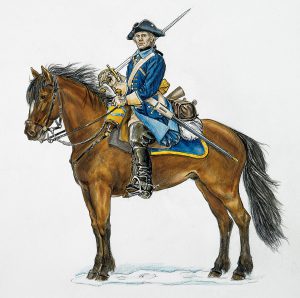 In 1697, at the age of 15, Karl XII acceded to the throne of Sweden, at the time a major European power with its heartland in Northern Europe.The king was facing a difficult task in preserving unity within in his vast kingdom. Positional warfare with Russia, Poland, Great Britain and Denmark was inevitable. As a result of losing the battle of Poltava in 1709, Sweden not only lost control of vast tracts of land but also suffered a significant decline in political power.
In 1697, at the age of 15, Karl XII acceded to the throne of Sweden, at the time a major European power with its heartland in Northern Europe.The king was facing a difficult task in preserving unity within in his vast kingdom. Positional warfare with Russia, Poland, Great Britain and Denmark was inevitable. As a result of losing the battle of Poltava in 1709, Sweden not only lost control of vast tracts of land but also suffered a significant decline in political power.
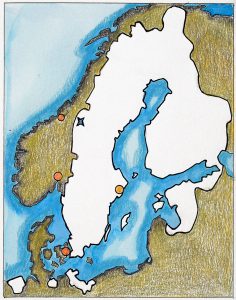 Sweden was subjected to a trade blockade, and in 1718 Karl XII again called up an army. His intention was to attack and take Norway in order to secure a stronger bargaining position for Sweden in future peace negotiations, or, alternatively, to strengthen the country’s military position in the event of continued warfare. The strategy chosen was to send the main body of the army, 40,000 men under the command of the King himself, to southern Norway. At the same time, an army of some 10,000 was to attack Norway from Jämtland with the aim of capturing the city of Trondheim.
Sweden was subjected to a trade blockade, and in 1718 Karl XII again called up an army. His intention was to attack and take Norway in order to secure a stronger bargaining position for Sweden in future peace negotiations, or, alternatively, to strengthen the country’s military position in the event of continued warfare. The strategy chosen was to send the main body of the army, 40,000 men under the command of the King himself, to southern Norway. At the same time, an army of some 10,000 was to attack Norway from Jämtland with the aim of capturing the city of Trondheim.
Mobilising in Duved
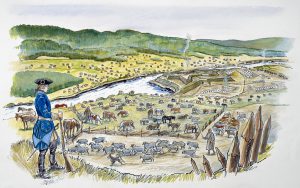 Lieutenant General Carl Gustaf Armfeldt, aged 52 and born in Finland but of Frösö decent, was appointed commander of the army.
Lieutenant General Carl Gustaf Armfeldt, aged 52 and born in Finland but of Frösö decent, was appointed commander of the army.
The King’s order was for Armfeldt to take Trondheim within six weeks. The campaign was to start at Duved. The area had seen several years of famine, and 1718 was another bad year. The summer of 1718 had also been very wet, which made roads and paths in Jämtland difficult to negotiate. The difficult task of scuring provisions and materiel for the army was given to Johan Henrik Friesenheim.
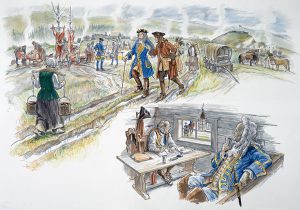
The march to Duved was a long and strenuous one for the regiments. Many soldiers were also war-weary from earlier campaigns.The army that set out on the march towards Trøndelag in Norway comprised 10,073 people, 6,721 horses, 2,500 cattle, and 727 farmers with horse and cart. More than half of the force was drawn from the Finnish regiments. Each man was allocated provisions to last for six weeks. As often as not, other equipment was worn and well used.
Stene redoubt
Stene redoubt was the first target in the Trøndelag area. The road from Skalstugan across Sul was held and barricaded by Norwegian units. Therefore Armfeldt chose to take the unbeaten track to towards Fersdalen in Meråker and continued the march past Hermansnasa towards Stene, having allowed the troops two days of rest at Lake Feren.
While troops feigned an attack on Stene from the east, the main body of the army moved around the fortification, attacking the Norwegians in the flank and rear. Major General Vincent Budde, newly married and 57 years old, commanded the northern mountain troops in Trøndelag. Budde was a seasoned commander with experience gained in campaigns in Denmark and Pommerania. He soon realised the Swedish army’s superiority in battle. He ordered a quick retreat from the redoubts of Stene and Skåne, which the Swedes were thus able to take without suffering any significant losses.
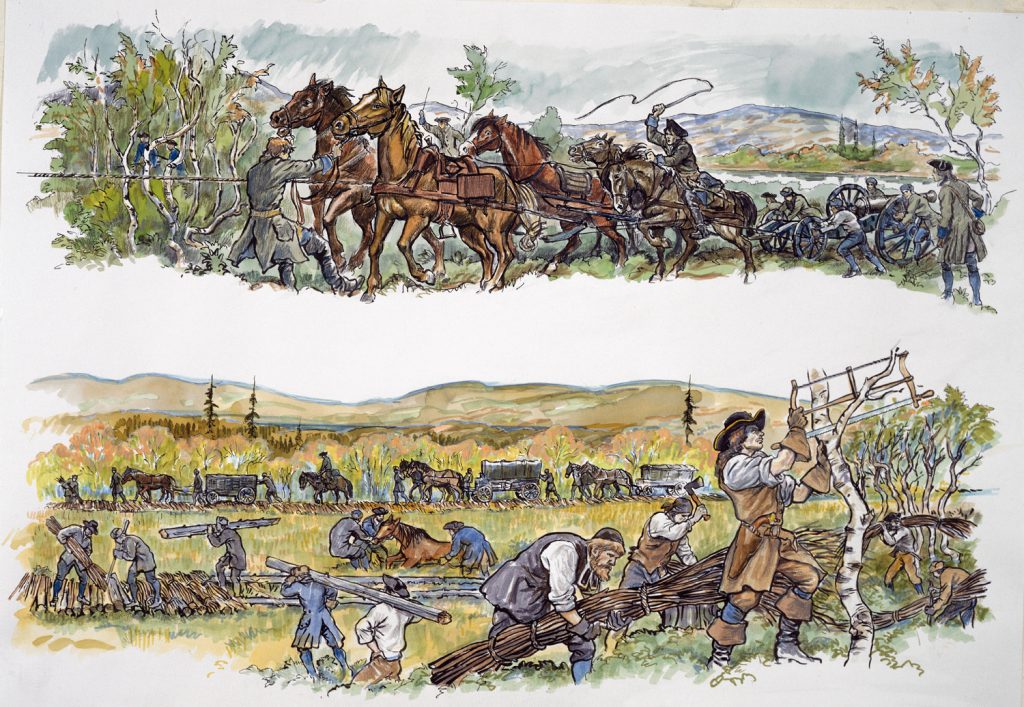
Failure to reach Trondheim
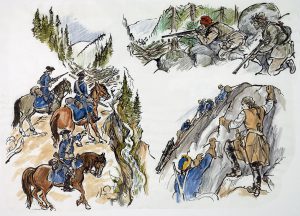
The army continued to march south towards Trondheim. The roads were in poor condition and repeated sorties by small groups of Norwegian soldiers delayed the advance of the Swedish troops. The mountain pass at Langstein, where around 300 Norwegian soldiers had taken up position, was particularly difficult. Armfeldt described the Langstein crossing as “a sum of bad roads”. At Stjørdalselven river the water level was so high that a crossing was deemed impossible.
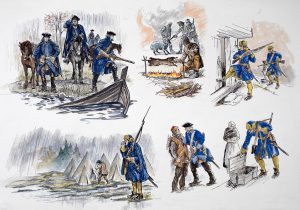 The soldiers were exposed to cold, wet, hunger and disease, and the shortage of provisions was fast becoming a serious problem. For a while, Armfeldt waited here for food supplies from Duved to arrive, but to no avail. Armfeldt finally decided to turn back to Verdal, where food was expected to be easier to obtain. The civilian population had suffered great hardships during the famine years. Now, with the Swedish army ravaging the area in search for provisions, the situation was becoming intolerable.
The soldiers were exposed to cold, wet, hunger and disease, and the shortage of provisions was fast becoming a serious problem. For a while, Armfeldt waited here for food supplies from Duved to arrive, but to no avail. Armfeldt finally decided to turn back to Verdal, where food was expected to be easier to obtain. The civilian population had suffered great hardships during the famine years. Now, with the Swedish army ravaging the area in search for provisions, the situation was becoming intolerable.
The king is not pleased
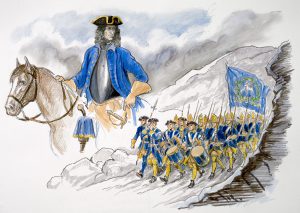 It is now late October. The king is dissatisfied with developments in Trøndelag and decides on immediate departure for Trondheim. Progress was good, and the army reached Trondheim within a week. While Armfeldt lingered at Verdal, Budde had managed to obtain reinforcements and mobilise the defence of Trondheim. Because of the wet and soggy roads, Armfeldt’s heavy artillery had been abandoned on the road to Skalstugan. With no artillery, Armfeldt was unlikely to be able to breach the defences of Kristiansten and take the city of Trondheim.
It is now late October. The king is dissatisfied with developments in Trøndelag and decides on immediate departure for Trondheim. Progress was good, and the army reached Trondheim within a week. While Armfeldt lingered at Verdal, Budde had managed to obtain reinforcements and mobilise the defence of Trondheim. Because of the wet and soggy roads, Armfeldt’s heavy artillery had been abandoned on the road to Skalstugan. With no artillery, Armfeldt was unlikely to be able to breach the defences of Kristiansten and take the city of Trondheim.
There followed a long wait. Both sides suffered greatly because of sickness and shortage of food. Armfeldt did not have the equipment needed to take the city, so Budde decided to out-wait the enemy.
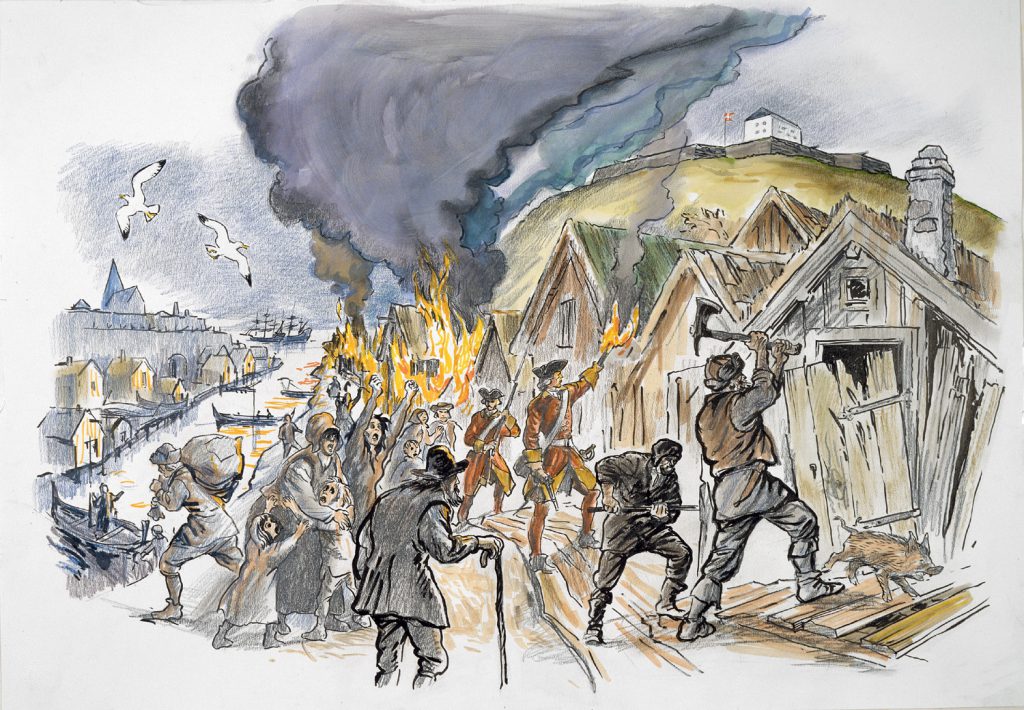
Captain Långström and General de la Barre
The irregular troops under the command of Captain Peter Långström frequently operated in support of Armfedt’s main army. The captain and his men, handpicked for the purpose, spread terror in Trøndelag with their fearless raids and scouting sorties. On 24 November, Peter Långström was ambushed and killed at Forradalen. General Reinhold Johan de la Barre was Armfeldt’s next-in-command and “director of operations”. De la Barre and his cavalry are known for their fearless pursuit of a Norwegian cavalry unit south across the mountains of Dovre. He also captured Røros and its important copper deposits.
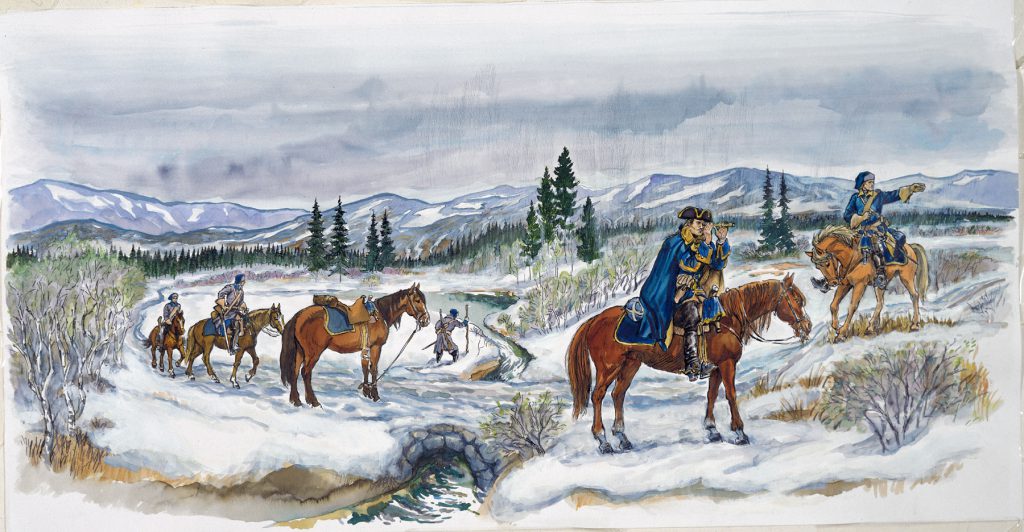
The King is dead
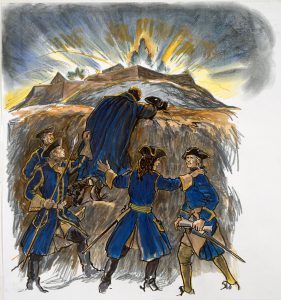 In mid-December, the Norwegians had confirmation of rumours that Karl XII had died on November 30, shot at the fortification of Fredriksten. Armfeldt, who had probably not been officially informed about the king’s death, took the army south towards Haltdalen.
In mid-December, the Norwegians had confirmation of rumours that Karl XII had died on November 30, shot at the fortification of Fredriksten. Armfeldt, who had probably not been officially informed about the king’s death, took the army south towards Haltdalen.
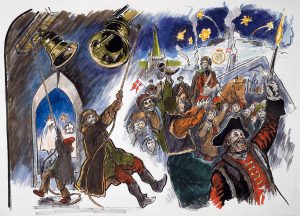
The death march begins
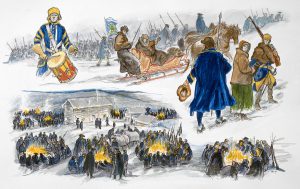 On Christmas Eve, the poorly clothed soldiers assembled at the small stave church at Haltdalen to celebrate the birth of Christ. The morning service concluded with the soldiers singing the traditional hymn “A mighty fortress is our God”.
On Christmas Eve, the poorly clothed soldiers assembled at the small stave church at Haltdalen to celebrate the birth of Christ. The morning service concluded with the soldiers singing the traditional hymn “A mighty fortress is our God”.
They suffered greatly from the cold, and in desperation the soldiers plundered the farms in the area for anything that could be consumed or used to protect them from the cold. Sometimes, farmers who resisted were shot. Despite the plunder of the civilian population, many soldiers died from cold at this stage of the campaign.
The soldiers were retreating across Bukkhammeren mountain when a snowstorm hit, killing at least 200 men. Finally, under constant surveillance and at times under attack from Budde’s ski units, the troops reached Tydal. Here, the poorly clothed and exhausted troops ravaged and plundered to stay alive, taking everything in the way of food, clothing and firewood that could be found and causing great suffering in the area.
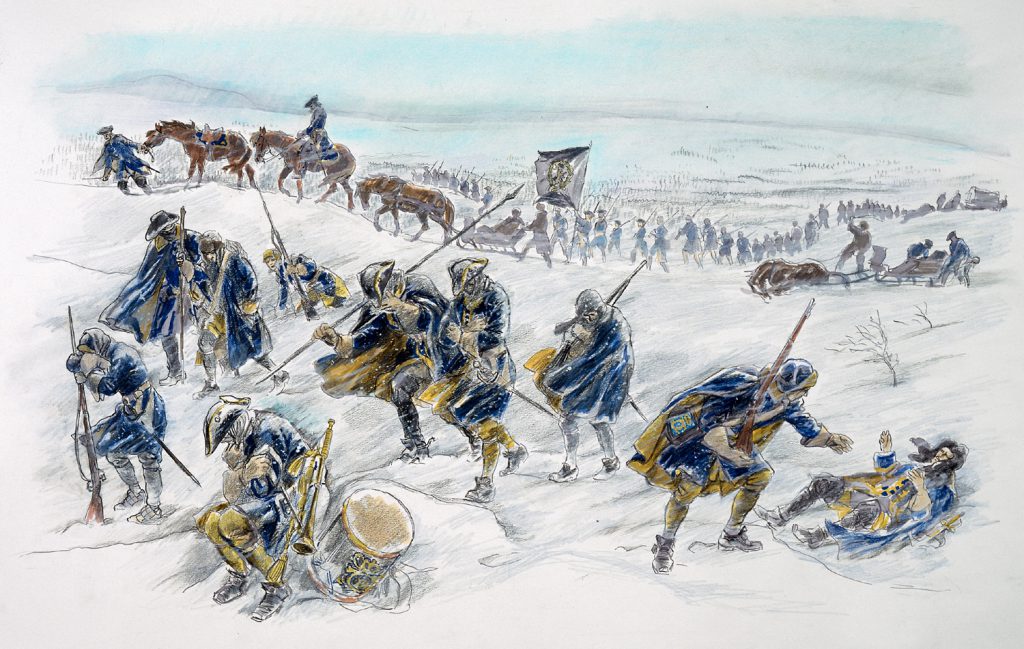
The fateful retreat across the mountain to Handöl began on New Year’s Eve. The cold was severe. The wretched state of the soldiers and their substandard kit would have made crossing the mountain a hazardous project even under more favourable conditions. Armfeldt took some women hostages in Tydal in order to force the Norwegian farmers to show them the best route across the mountain.
Disaster strikes
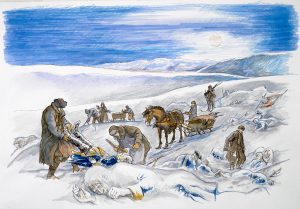 No sooner had the army reached the barren mountain slopes than a cruel snow storm set in. The women hostages were set free. The number of soldiers dying in the cold continued to rise. There was no shelter to protect them from the biting wind, there were no skis, no firewood, and the men were weak, their clothes in rags.
No sooner had the army reached the barren mountain slopes than a cruel snow storm set in. The women hostages were set free. The number of soldiers dying in the cold continued to rise. There was no shelter to protect them from the biting wind, there were no skis, no firewood, and the men were weak, their clothes in rags.
Everywhere there were bodies of soldiers killed by the cold, like statues, frozen in different positions.
Lying down, standing, crawling…
The relentless blizzard scattered the soldiers over the mountain terrain. It took three days for the first soldiers to reach Handöl. At the time there were only three farms in Handöl, and the people could do little to help the exhausted troops. Most of the soldiers had suffered frostbite, keeping the field surgeon busy with amputations. A soapstone tablet, found later, bears witness to the tragedy:
Anno 1719 the 20 January there were buried here 600 people.
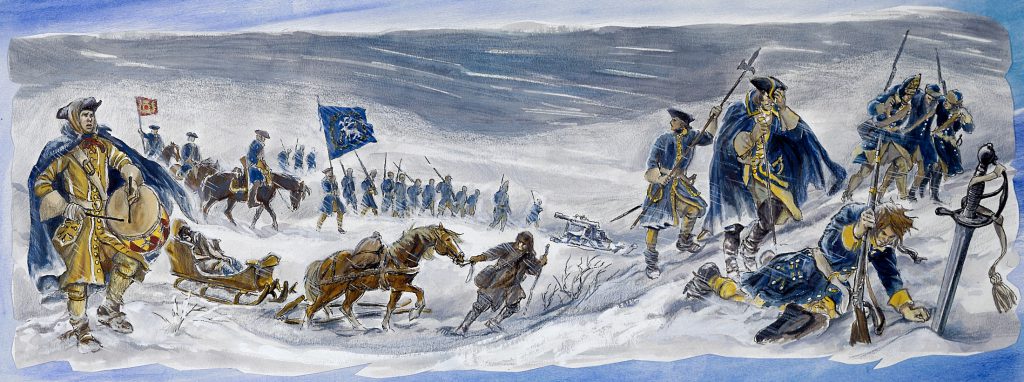
Consequences of the campaign
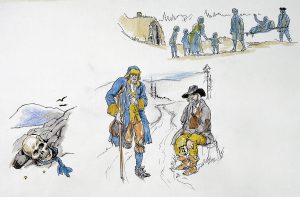 A total of 3,700 soldiers died, 3,000 of them while crossing the mountain. Another 451 soldiers were dismissed after the campaign as the frostbite damage they had suffered made them unfit for military service. The civilian population in Jämtland as well as in the Trøndelag region also suffered greatly from starvation and disease as a result of the war.
A total of 3,700 soldiers died, 3,000 of them while crossing the mountain. Another 451 soldiers were dismissed after the campaign as the frostbite damage they had suffered made them unfit for military service. The civilian population in Jämtland as well as in the Trøndelag region also suffered greatly from starvation and disease as a result of the war.
A large number of people, many of them children, died as a direct consequence of the campaign. The war was a matter for kings, far beyond the understanding of ordinary people. Armfeldt’s Norwegian campaign, in which few actual battles were fought, caused great military and civilian losses and had far-reaching consequences for the Trøndelag region.
